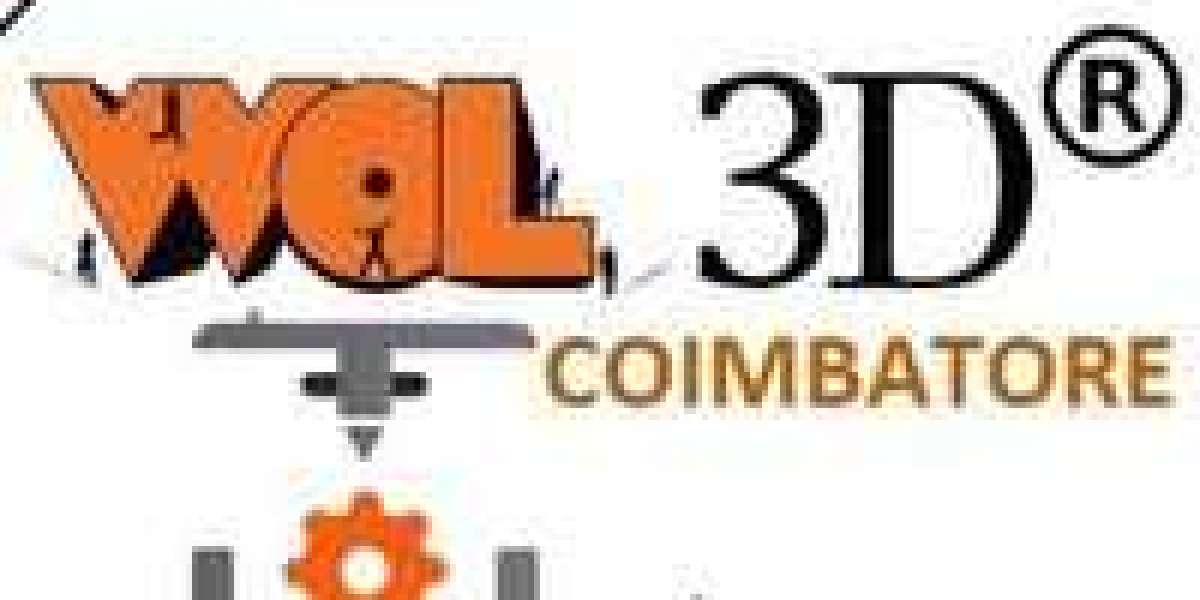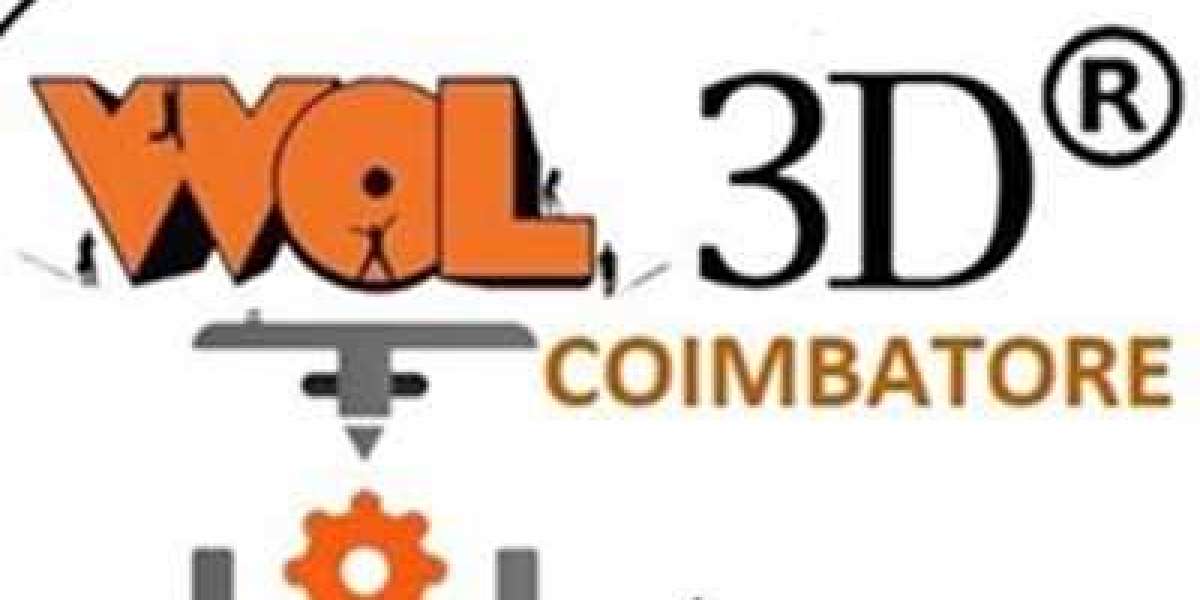Breast cancer is one of the most common cancers affecting women worldwide. It occurs when cells in the breast begin to grow uncontrollably, forming a tumor that can often be seen on an x-ray or felt as a lump. The importance of effective breast cancer treatment cannot be overstated, as it not only improves survival rates but also enhances the quality of life for patients. In 2023, the global breast cancer treatment market attained a value of approximately USD 22.49 billion. This market is poised for substantial growth, driven by the increasing demand for diagnostics and therapeutics, and is projected to reach USD 53.47 billion by 2032, growing at a CAGR of 10.10% during the forecast period.
Market Overview
Definition and Types of Breast Cancer Treatments: Breast cancer treatments are medical interventions used to manage and eradicate breast cancer. The primary types include:
- Hormonal Therapy: Targets hormone receptor-positive breast cancers by blocking the body's natural hormones from fueling cancer growth.
- Chemotherapy: Uses drugs to kill cancer cells or stop them from growing and dividing.
- Targeted Therapy: Focuses on specific molecules and signaling pathways that are involved in the growth and survival of cancer cells.
- Immunotherapy: Uses the body's immune system to fight cancer.
- Surgery: Involves the physical removal of the tumor and sometimes nearby tissues.
- Radiation Therapy: Uses high-energy rays to kill cancer cells and shrink tumors.
Historical Market Trends and Growth Trajectory: The breast cancer treatment market has seen significant advancements over the past few decades. Improved screening methods, early detection programs, and innovative treatment options have contributed to better patient outcomes and increased survival rates. Historically, the market has grown steadily, driven by the rising incidence of breast cancer and advancements in medical technology. The introduction of personalized medicine and targeted therapies has further fueled market growth.
Projected Market Size by 2032: The global breast cancer treatment market is anticipated to grow from USD 22.49 billion in 2023 to USD 53.47 billion by 2032, reflecting a robust CAGR of 10.10%. This growth is attributed to ongoing advancements in treatment modalities, increasing awareness, and the expansion of healthcare infrastructure in emerging markets.
Market Dynamics
Drivers:
- Increasing Incidence of Breast Cancer: The rising number of breast cancer cases worldwide is a primary driver for the market. Improved diagnostic techniques and greater awareness have led to more frequent detection and diagnosis.
- Advancements in Diagnostics and Therapeutics: Continuous innovation in diagnostic tools and therapeutic options enhances the ability to detect and treat breast cancer more effectively. Advanced imaging technologies and molecular diagnostics have improved early detection, while novel therapies offer more targeted and effective treatment options.
- Growing Awareness and Early Detection Programs: Public health campaigns and screening programs have significantly increased awareness about breast cancer, leading to earlier diagnosis and treatment. Early detection is crucial for successful treatment outcomes and has a positive impact on market growth.
Restraints:
- High Cost of Treatment: The high cost associated with advanced breast cancer treatments, including targeted therapies and immunotherapies, can be a significant barrier to access, particularly in low- and middle-income countries.
- Side Effects Associated with Treatments: Many breast cancer treatments, such as chemotherapy and radiation therapy, come with severe side effects that can impact patients' quality of life and limit their use.
Opportunities:
- Development of Personalized Medicine: Personalized medicine, which tailors treatment to the individual characteristics of each patient, offers significant potential for improving treatment outcomes and reducing side effects. Advances in genomics and molecular biology are driving the development of personalized therapies.
- Expanding Healthcare Infrastructure in Emerging Markets: Emerging markets are investing heavily in healthcare infrastructure, creating opportunities for market expansion. Improved access to healthcare services and increased awareness are expected to drive demand for breast cancer treatments in these regions.
Challenges:
- Regulatory Hurdles: The development and approval of new breast cancer treatments are subject to stringent regulatory requirements, which can be time-consuming and costly.
- Access to Treatment in Low-Income Regions: Despite advancements in treatment, access to care remains a significant challenge in low-income regions due to financial constraints, lack of healthcare facilities, and limited awareness.
4. Market Trends
- Rising Adoption of Targeted Therapies: Targeted therapies, which focus on specific molecular targets associated with cancer, are becoming increasingly popular due to their effectiveness and reduced side effects compared to traditional chemotherapy.
- Increasing Use of Immunotherapy: Immunotherapy, which harnesses the body's immune system to fight cancer, is gaining traction as a promising treatment option for breast cancer. It offers the potential for long-term remission and fewer side effects.
- Development of Combination Therapies: Combining different treatment modalities, such as targeted therapy and immunotherapy, is emerging as a strategy to enhance treatment efficacy and overcome resistance to single therapies.
- Growing Focus on Minimally Invasive Treatments: Minimally invasive surgical techniques and radiation therapies are being developed to reduce the physical and psychological burden on patients, leading to faster recovery times and improved quality of life.
Market Segmentation
By Treatment Type:
- Hormonal Therapy: Hormonal therapies are used to treat hormone receptor-positive breast cancers by blocking estrogen and progesterone from stimulating cancer growth. Common drugs include tamoxifen and aromatase inhibitors.
- Chemotherapy: Chemotherapy involves the use of cytotoxic drugs to kill rapidly dividing cancer cells. It is often used in combination with other treatments and can be administered before (neoadjuvant) or after (adjuvant) surgery.
- Targeted Therapy: Targeted therapies, such as HER2 inhibitors (e.g., trastuzumab) and CDK4/6 inhibitors (e.g., palbociclib), specifically target molecular pathways involved in cancer progression.
- Immunotherapy: Immunotherapy, including checkpoint inhibitors and cancer vaccines, enhances the body's immune response against cancer cells. Pembrolizumab is an example of a checkpoint inhibitor used in breast cancer treatment.
- Surgery: Surgical options include lumpectomy (removal of the tumor and a small margin of surrounding tissue) and mastectomy (removal of one or both breasts). Sentinel lymph node biopsy and axillary lymph node dissection are also common procedures.
- Radiation Therapy: Radiation therapy uses high-energy rays to target and destroy cancer cells. It is often used after surgery to eliminate residual cancer cells and reduce the risk of recurrence.
- Others: Other treatments include bone-modifying agents to prevent bone metastases and supportive care therapies to manage symptoms and side effects.
By Distribution Channel:
- Hospitals: Hospitals are the primary providers of breast cancer treatment, offering comprehensive care, including surgery, chemotherapy, radiation therapy, and supportive services.
- Specialty Clinics: Specialty clinics focus on specific aspects of breast cancer care, such as radiation oncology or surgical oncology, providing specialized treatment and follow-up care.
- Retail Pharmacies: Retail pharmacies dispense oral cancer medications, hormonal therapies, and supportive care drugs, providing convenient access to essential treatments.
- Online Pharmacies: Online pharmacies offer a convenient way for patients to order and receive medications, particularly for long-term therapies and supportive care.
By Region:
- North America: North America leads the market due to its advanced healthcare infrastructure, high prevalence of breast cancer, and significant investment in research and development.
- Europe: Europe holds a substantial market share, driven by robust healthcare systems, high awareness, and early detection programs.
- Asia Pacific: The Asia Pacific region is experiencing rapid growth, fueled by increasing healthcare investments, rising awareness, and improving access to cancer care.
- Latin America: Latin America is witnessing steady growth, supported by initiatives to enhance healthcare infrastructure and cancer awareness.
- Middle East Africa: The Middle East Africa region is emerging as a potential market, with growing healthcare investments and efforts to improve cancer care access.
Competitive Landscape
Overview of Key Players and Their Market Share: The global breast cancer treatment market is highly competitive, with several key players dominating the market through innovative products, strategic partnerships, and extensive RD activities.
Mylan N.V (Viatris Inc.):
- Company Profile: Mylan N.V., now part of Viatris Inc., is a global pharmaceutical company known for its broad portfolio of generic and specialty drugs.
- Product Portfolio: Includes a range of oncology drugs, biosimilars, and supportive care medications.
- Recent Developments and Strategies: Mylan focuses on expanding its biosimilar portfolio and enhancing access to affordable cancer treatments worldwide.
AstraZeneca:
- Company Profile: AstraZeneca is a leading global biopharmaceutical company focused on the discovery, development, and commercialization of prescription medicines.
- Product Portfolio: Includes innovative cancer treatments such as PARP inhibitors (e.g., olaparib) and targeted therapies (e.g., trastuzumab deruxtecan).
- Recent Developments and Strategies: AstraZeneca is actively engaged in clinical trials to expand the indications for its oncology drugs and exploring combination therapies to enhance treatment efficacy.
Celltrion Inc.:
- Company Profile: Celltrion is a South Korean biopharmaceutical company specializing in the development of biosimilars and innovative biologics.
- Product Portfolio: Includes biosimilars for cancer treatment, such as trastuzumab biosimilars.
- Recent Developments and Strategies: Celltrion focuses on expanding its global presence through strategic partnerships and advancing its pipeline of biosimilars and innovative biologics.
Bristol-Myers Squibb Company:
- Company Profile: Bristol-Myers Squibb is a global biopharmaceutical company known for its innovative treatments in oncology, immunology, and cardiovascular diseases.
- Product Portfolio: Includes immunotherapy drugs (e.g., nivolumab) and targeted therapies for breast cancer.
- Recent Developments and Strategies: Bristol-Myers Squibb invests heavily in RD to discover and develop new cancer treatments and is involved in numerous clinical trials to evaluate combination therapies.
Other Notable Players: Other significant players in the market include Roche, Pfizer, Novartis, Eli Lilly and Company, and Merck Co., each contributing to the competitive landscape with their innovative products and strategic initiatives.
Market Forecast (2024-2032)
Projected Market Size and Growth Rate: The global breast cancer treatment market is projected to grow at a CAGR of 10.10% from 2024 to 2032, reaching an estimated value of USD 53.47 billion by 2032. This growth is driven by continuous advancements in treatment options, increasing awareness, and the expansion of healthcare infrastructure in emerging markets.
Key Factors Influencing Future Market Growth:
- Ongoing advancements in diagnostic and therapeutic technologies
- Rising prevalence of breast cancer and increasing screening programs
- Development and approval of novel treatments and combination therapies
- Expansion of healthcare infrastructure and access to care in emerging markets
Potential Market Opportunities and Areas of Expansion:
- Growth in personalized medicine and targeted therapies
- Increased investment in research and development for innovative treatments
- Expansion of market reach through strategic partnerships and collaborations
- Focus on improving access to care in low- and middle-income regions
Recent Developments
Key Mergers and Acquisitions:
- Significant mergers and acquisitions among key players to enhance market presence and expand product portfolios. For example, the merger between Mylan and Upjohn to form Viatris Inc.
- Impact on market dynamics and competitive landscape. These mergers and acquisitions have led to increased market consolidation and strengthened the competitive position of leading companies.
Technological Advancements and Product Launches:
- Introduction of new and improved breast cancer treatments, including targeted therapies, immunotherapies, and combination therapies.
- Adoption of advanced diagnostic technologies, such as liquid biopsies and next-generation sequencing, to enhance early detection and treatment precision.
Regulatory Approvals and Industry Standards:
- Overview of recent regulatory approvals for new breast cancer treatments. Regulatory approvals play a crucial role in ensuring the safety and efficacy of new treatments and facilitating market entry.
- Impact of industry standards on product development and market access. Compliance with industry standards is essential for gaining market acceptance and building trust among healthcare providers and patients.
Competitive Strategies
Strategies Adopted by Market Leaders:
- Investment in RD to drive innovation and maintain a competitive edge. Leading companies are continuously investing in research and development to discover new treatments and improve existing ones.
- Expansion of product lines to cater to diverse medical needs. By offering a wide range of treatments, companies can meet the varying needs of breast cancer patients and healthcare providers.
Partnerships, Collaborations, and Joint Ventures:
- Formation of strategic alliances to enhance market reach and capabilities. Collaborations between pharmaceutical companies, research institutions, and healthcare providers facilitate the development and distribution of innovative treatments.
- Examples of successful partnerships and their impact on the market. Collaborative efforts have led to the introduction of new products and expanded market presence.
Focus on RD and Innovation:
- Continuous investment in research and development to stay ahead in the market. Companies are focusing on developing new technologies and improving the performance of their treatments.
- Key areas of innovation and their potential impact on market growth. Innovations in targeted therapies, immunotherapies, and personalized medicine are expected to drive market growth and enhance patient care.
SWOT Analysis
Strengths:
- Established market presence of key players. Leading companies have a strong brand reputation and a wide range of products.
- Technological advancements and innovative product offerings. Continuous innovation has led to the development of high-quality, effective, and reliable breast cancer treatments.
Weaknesses:
- High cost of advanced breast cancer treatments. The price of these treatments can be a barrier to access, particularly for patients in low- and middle-income regions.
- Side effects associated with treatments. Many breast cancer treatments come with significant side effects that can impact patients' quality of life and limit their use.
Opportunities:
- Growing demand in emerging markets. Developing regions are investing in healthcare infrastructure, creating opportunities for market expansion.
- Development of personalized and targeted therapies. Innovations in personalized medicine and targeted treatments offer new opportunities for improving patient outcomes and reducing side effects.
Threats:
- Competition from alternative therapies and generic drugs. The availability of alternative treatments and generic drugs poses a competitive threat to established brands.
- Regulatory hurdles and compliance challenges. The stringent regulatory environment can be a barrier to the development and approval of new treatments.
Patent Analysis
Overview of Key Patents and Intellectual Property Trends:
- Examination of major patents related to breast cancer treatments. Patents protect the intellectual property of innovative treatments, providing a competitive advantage to companies.
- Impact of intellectual property on market dynamics and competition. Patents encourage innovation and investment in research and development, but their expiration can lead to increased competition from generic drugs.
Impact of Patent Expiration on Market Dynamics:
- Analysis of how patent expirations influence market entry and competition. When patents expire, other companies can enter the market with similar products, increasing competition and potentially driving down prices.
- Potential for generic products and their effect on market prices. The introduction of generic products can lead to price reductions, making treatments more accessible to a broader patient population.
Grant and Funding Analysis
Analysis of Major Grants and Funding Received by Key Players:
- Overview of significant grants and funding awarded to leading companies. Grants and funding support research and development activities, leading to the discovery and development of new treatments.
- Impact on research and development activities. Financial support from grants and funding encourages companies to pursue innovative projects and bring new treatments to market.
Impact on Research and Development Activities:
- How funding and grants drive innovation and product development. Financial support enables companies to invest in research and development, leading to the discovery of breakthrough treatments.
- Examples of breakthrough products resulting from substantial funding. Innovative treatments developed with the help of grants and funding have the potential to revolutionize the breast cancer treatment market.
Clinical Trials Analysis
Overview of Ongoing and Completed Clinical Trials:
- Summary of key clinical trials related to breast cancer treatments. Clinical trials evaluate the safety and efficacy of new treatments and provide valuable data for regulatory approvals.
- Objectives, methodologies, and outcomes of significant trials. These trials provide insights into the effectiveness of new treatments and their potential impact on patient outcomes.
Key Findings and Implications for the Market:
- Analysis of trial results and their impact on product development and market adoption. Positive trial outcomes can lead to regulatory approvals and market entry, while negative results can impact the development pipeline.
- Potential for new applications and market expansion. Clinical trials can identify new uses for existing treatments and drive market growth by expanding the indications for approved drugs.
Partnerships and Collaborations
Analysis of Strategic Partnerships and Collaborations:
- Overview of recent partnerships and their strategic importance. Collaborations between pharmaceutical companies, research institutions, and healthcare providers enhance product development and distribution.
- Impact on market growth and innovation. Partnerships facilitate the exchange of knowledge and resources, leading to the development of innovative treatments and expanded market reach.
Impact on Market Growth and Innovation:
- How collaborations enhance technological advancements and market reach. Collaborative efforts result in the development of advanced technologies and improved treatments.
- Examples of successful collaborations and their outcomes. Successful partnerships have led to the introduction of new products, enhanced treatment options, and increased market penetration.
Top Trending Reports
Europe Dental Disposables Market
Australia and New Zealand In Vitro Diagnostics Market
South Korea General Anesthesia Market
Media Contact:
Company Name: Claight Corporation
Contact Person: Jhon Roy, Business Consultant
Email: [email protected]
Toll Free Number: US +1-415-325-5166 | UK +44-702-402-5790
Address: 30 North Gould Street, Sheridan, WY 82801, USA
Website: www.expertmarketresearch.com








